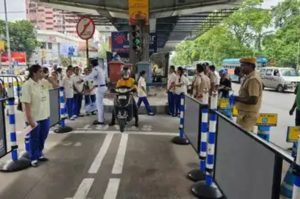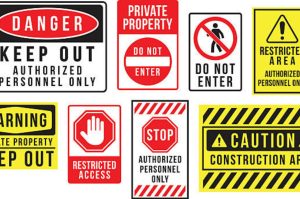Kolkata Police Teach Lane-Cutting Awareness: Kolkata Police Teach Lane-Cutting Awareness — In a refreshing initiative blending civic responsibility with early education, the Kolkata Traffic Police have embarked on a program teaching young students about “lane-cutting etiquette”—aimed at curbing dangerous driving practices at a formative age. The programme launched this week at Sampreeti Shiksha Niketan in Lake Gardens, where officers donned uniforms and helmets to deliver a driving lesson unlike any other.
This initiative marks a novel shift in India’s urban traffic management—away from punitive measures and toward proactive, community-oriented awareness beginning in childhood.

Kolkata Police Teach Lane-Cutting Awareness: What Happened
On July 1, traffic constables visited the school campus. They demonstrated:
- The proper position to maintain two-wheelers in a lane
- Risks of passing on shoulders or footpaths
- The importance of wearing helmets and seat belts even for short rides
Using charts and simple games, they explained how “cutting lanes” can cause abrupt braking, swerve accidents, and chain collisions in crowded city traffic.
A short Q&A session followed, with students asking about road signs, helmet types, and how to report dangerous driving—all guiding toward responsible citizen behavior.
Kolkata Police Teach Lane-Cutting Awareness: Why It Matters
1. Deep-Rooted Disorderly Driving
“Kolkata roads are known not only for vibrant culture but also unpredictable driving,” says Inspector Rana Sarkar of Traffic Management Unit. “Everyone rushes—autos, bikes, buses. If children learn discipline early, they influence families and communities.”
2. Formative Education
Psychologists confirm that childhood is critical for forming lifelong habits. Initiative participants will help build behavioural expectations shaped by civic role models at home and on the streets.
3. Global Precedent
Countries like Sweden and The Netherlands, with high road safety records, officially include traffic education in their primary school curricula. India’s National Education Policy 2020 also emphasises life-skills training including road safety education by grade 5.
Road Safety Education in National Education Policy 2020
Sweden’s ‘Vision Zero’: Safe System Approach


What the Students Gained
Teachers reported that children learned:
- To ask adults to wear helmets and use seat belts
- Not to ride on sidewalks or shoulder cut-throughs
- To identify and obey traffic signals
Praise for the program included remarks like: “It was fun yet serious,” adding to the idea that such messages were best delivered with respect to students’ attention spans.
Police Perspective
Traffic officials emphasised that young road users are often key influencers in households. When they remind elders to follow rules, enforcement becomes community-supported instead of isolated police action.
Similar community-based programs—like school safety ambassadors—have succeeded in reducing jaywalking on city roads in Pune, Bengaluru, and Chennai.
Expert Views Supportive
Dr. Neelam Bose, child psychologist: “Games and positive reinforcement reduce resistance in kids, who then feel empowered to promote rules at home.”
Mr. Ajay Dutta, head of the Rotary Club traffic awareness cell: “Sustained programmes in schools can change peer expectations tonight. In short term, kids inform; in long term, they shape norm compliance.”
Challenges Ahead
- Scale-Up Logistics
Kolkata traffic police plan to visit 100 schools over the next year. That requires recruiting officers prepared to explain engineering concepts simply—training them is underway. - Continuity Efforts
Follow-up is necessary—students must revise rules, share posters at home, and remind caregivers. Schools also plan quizzes, competitions, and #LaneRespect campaigns. - Evaluating Impact
Officials hope to see reduced fine counts and accident rates in zones around participating schools; pilot surveys are planned for surveys and traffic violation statistics over the next 6–12 months.
Best Practices: Road Safety Education
Drawing on global examples, a robust road-education curriculum includes:
- Classroom Scenario-Walkthroughs: Answering “what would you do…” queries
- School Streets Projects: Traffic-free school drop-off zones coupled with personnel guidance
- Parent Engagement Evenings: Sharing road safety as co-educators
- Real-Time Modules: Hands-on road-side safety drills while under officer supervision
Statistics: Why It’s Critical
- Road accidents are a leading cause of death among ages 5–29 in India, with lane cutting listed among top 10 risky maneuvers contributing to side-impact crashes.
- Children involved in traffic-related incidents often become conductors of household safety practices—even when not directly affected—making them valuable catalysts for rural and urban campaigns.
Voices from the Ground
- Riya (Class 7): “I saw my cousin riding helmet-less. Now I’ll ask him to put it on.”
- Parents on WhatsApp groups welcomed the lesson: “We can help children prepare for when they travel by bus or bike.”
The Road Ahead
Embedding these lessons within the school system promises to redefine Kolkata’s traffic culture. Kolkata Police plan to:
- Include lane etiquette modules in all district traffic education curriculums
- Introduce “Junior Traffic Ambassadors”
- Host city-wide Road Safety Week to celebrate and reinforce learning
Additionally, they aim to collaborate with school boards and state education departments to integrate these lessons into environmental science and social studies syllabus.
Key Takeaways
- Educating children on road etiquette is a pre-emptive strategy for long-term habit formation.
- Police involvement humanizes enforcement, shifting from punitive to participatory.
- When children advocate for safety at home, families become allies in regulation.
- Replicable, interactive formats—games and real-world practice—enhance retention.
- While impact measurement is planned, early feedback suggests positive attitudinal change among pupils and parents.


Further Reading
- National Crime Records Bureau – Road Accidents in India Report
- UNICEF – Children and Road Safety
- World Health Organization – Safe System Approach
Conclusion
With Kolkata grappling with everyday traffic chaos, this police-led initiative signals a forward shift—from policing to public partnership. By teaching lessons to fifth graders, Traffic Police are planting the seeds of future civic responsibility—where disciplined road use becomes ingrained long before licensure and adulthood.
Also read: Home | Channel 6 Network – Latest News, Breaking Updates: Politics, Business, Tech & More

